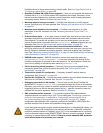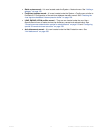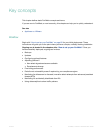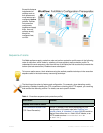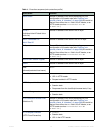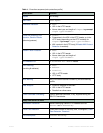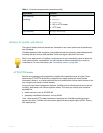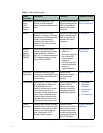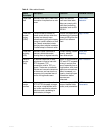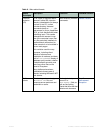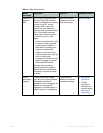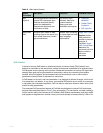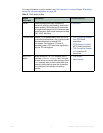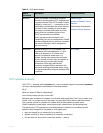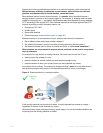
Fortinet 28 FortiWeb 5.0 Patch 6 Administration Guide
Table 2: Web-related threats
Attack
Technique
Description Protection FortiWeb Solution
Adobe Flash
binar
y
(AMF)
protocol
attacks
Attackers attempt XSS, SQL
injection
or other common
exploits through an Adobe Flash
client.
Decode and scan Flash
ac
tion message format
(AMF) binary data for
matches with attack
signatures.
Enable AMF3
Protocol Detection
Botnet Utilizes zombies previously
exploited or infected (or
willingly
participating), distributed usually
glo
bally, to simultaneously
overwhelm the target when
directed by the command and
control server(s).
Decode and scan Flash
ac
tion message format
(AMF) binary data for
matches with attack
signatures.
IP Reputation
Browser
Explo
it
Against
SSL/TLS
(BEAST)
A ma
n-in-the-middle attack
wh
ere an eavesdropper exploits
reused initialization vectors in
older TLS 1.0 implementations of
CBC-based encryption ciphers
such as AES and 3DES.
• Use TLS 1.1 or
g
reater, or
• Use ciphers that do
not involve CBC,
such as stream
ciphers, or
• Use CBC only with
correct initialization
vector (IV)
implementations
Prioritize RC4
Cipher Suite
Brute force
log
in
attack
An attacker attempts to gain
authorization by repeatedly trying
ID and password combinations
until one works.
Require strong
pass
words for users,
and throttle login
attempts.
Brute Force Login
Clickjacking Code such as <IFRAME> HT
ML
tags
superimposes buttons or
other DOM/inputs of the
attacker’s choice over a normal
form, causing the victim to
unwittingly provide data such as
bank or login credentials to the
attacker’s server instead of the
legitimate web server when the
victim clicks to submit the form.
Scan for illegal inputs to
pr
event the initial
injection, then apply
rewrites to scrub any
web pages that have
already been affected.
• Sig
natures
• Parameter
Validation
• Hidden Fields
Protection
• URL Rewriting
Cookie
ta
mper
ing
Attackers alter cookies originally
established by the server to inject
overflows, shell code, and other
attacks, or to commit identity
fraud, hijacking the HTTP
sessions of other clients.
Validate cookies
r
eturned by the client to
ensure that they have
not been altered from
the previous response
from the web server for
that HTTP session.
Cookie Poisoning
Detection



